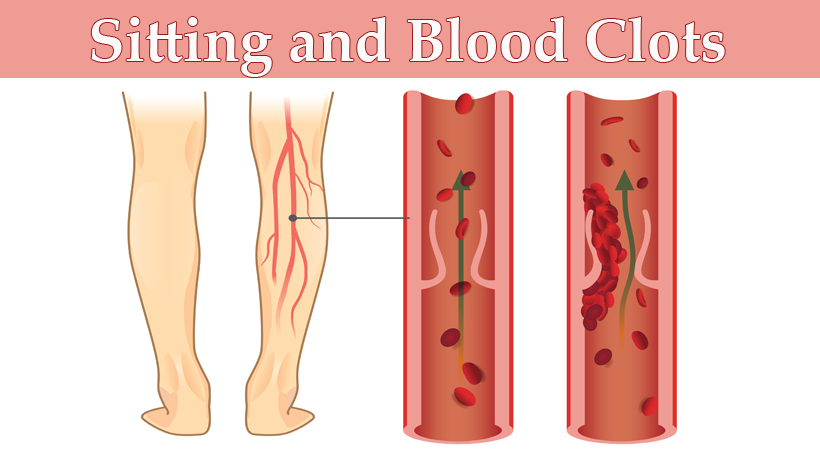Nearly anyone who has been confined to an airplane seat or bed rest for hours might complain how tedious it is to be stuck in one place. Yet sitting in one place for long periods of time might be more than just mind-numbingly boring.
According to the National Heart, Lung, and Blood Institute (NHLBI), sitting for too long slows blood flow through the veins in the arms and legs, increasing the risk of deep vein thrombosis (DVT). This can happen at any age, but after age 40 the risk nearly doubles almost every 10 years.
Deep vein thrombosis
DVT is a medical condition that occurs when a blood clot forms in a deep vein, usually in the leg. According to the Centers for Disease Control and Prevention (CDC), the most serious complication of DVT happens when a part of the clot breaks off and travels through the bloodstream to the lungs, causing a blockage called pulmonary embolism that could potentially damage the lungs.
The CDC also says one-third of people who have a DVT will have long-term complications called post-thrombotic syndrome (PTS). People with PTS have symptoms such as swelling, pain, discoloration, and in severe cases, scaling or ulcers in the affected part of the body. Sometimes, the symptoms can be so severe that a person becomes disabled.
Due to increased estrogen, women may be more at risk of clotting if they take birth control pills or get hormone therapy, says the NHLBI. The risk is also higher in the first six weeks after having a baby. Besides a sedentary lifestyle and increased estrogen production, other risk factors include a history of obesity, heart disease, and certain surgeries. The NHLBI says knee and hip replacement surgeries, in particular, have a high risk for DVT. This is because clotting is one of the body’s natural ways to heal the damage to the blood vessels from surgery and because patients are often on bed rest to recover from surgery.
Warning signs
The CDC says about half the people who have DVT have no symptoms at all, and not all of the people who do have the same symptoms. According to the American Academy of Orthopaedic Surgeons, here are the most common signs and symptoms:
- Swelling
- Pain or tenderness
- Increased warmth, cramps, or aching in the area that is swollen or painful, usually the calf or thigh
- Red or discolored skin
- A firmness or thickening of the vein called a “cord”
Prevention and treatment
After staying in bed to recover from injury or illness, the CDC recommends moving as soon your doctor says it’s safe. Your doctor might also recommend blood thinners or compression stockings that put pressure on the leg.
If you’re traveling, the CDC says to try to find ways to get up and move every few hours. If you’re driving, pull over and walk around every two to three hours; if you’re on a plane, walk the aisles when you can.
If you have a sedentary lifestyle, the CDC recommends exercising your legs while sitting by:
- Raising and lowering your heels while keeping your toes on the floor
- Raising and lowering your toes while keeping your heels on the floor
- Tightening and releasing your leg muscles
Maintaining a healthy weight and staying active are the most recommended methods to avoid DVT. If you suspect you might have formed a blood clot, talk to your doctor immediately. If your clot is small enough, your doctor may treat your blood clot with medication and stockings; in more severe cases, it may need to be surgically removed.
Sources:
https://www.nhlbi.nih.gov/health-topics/venous-thromboembolism
https://www.cdc.gov/ncbddd/dvt/facts.html
https://www.lifeline24.co.uk/deep-vein-thrombosis/
https://orthoinfo.aaos.org/en/diseases–conditions/deep-vein-thrombosis



